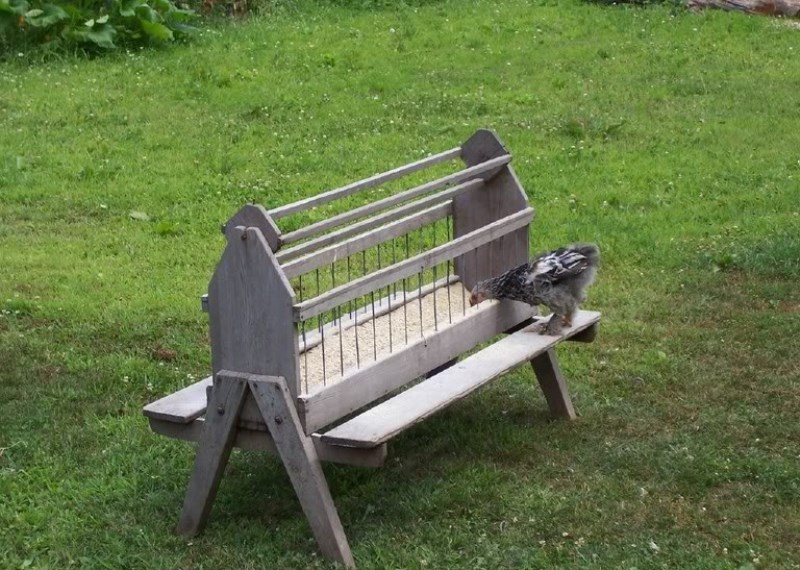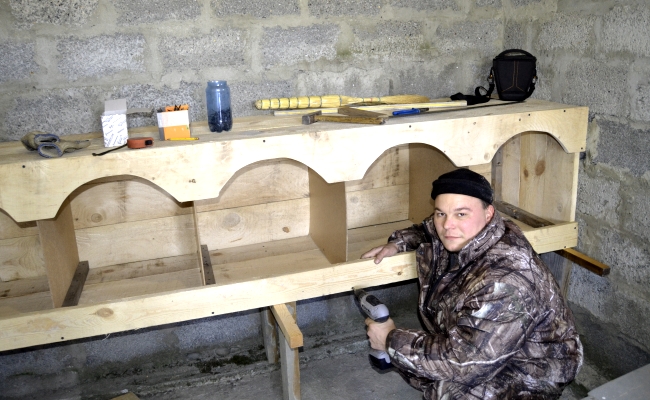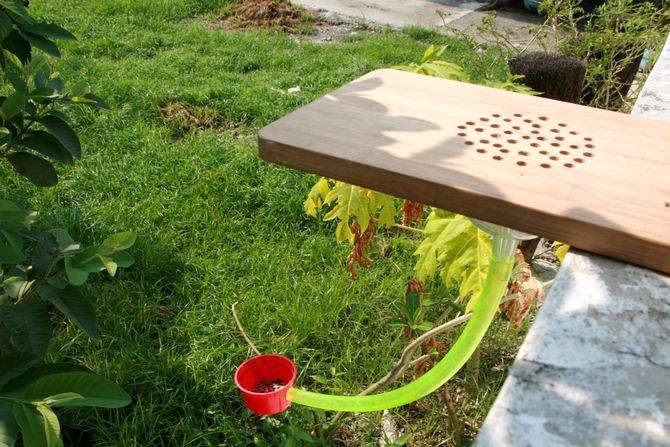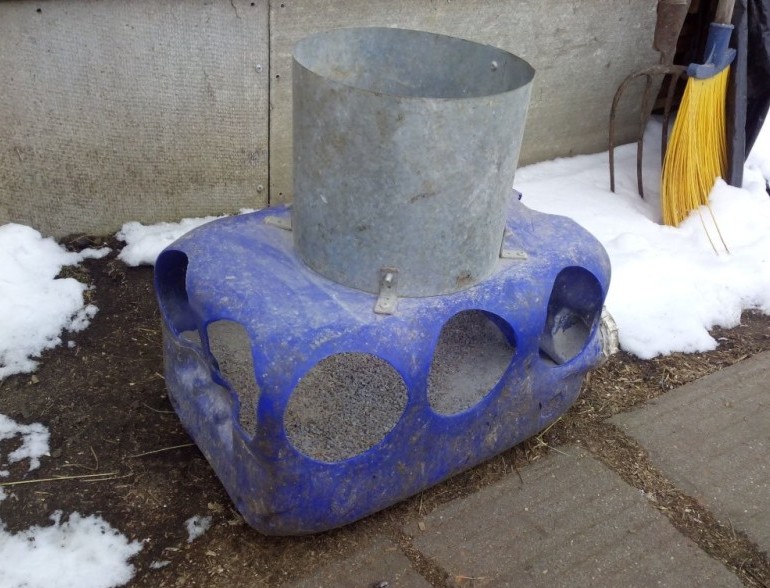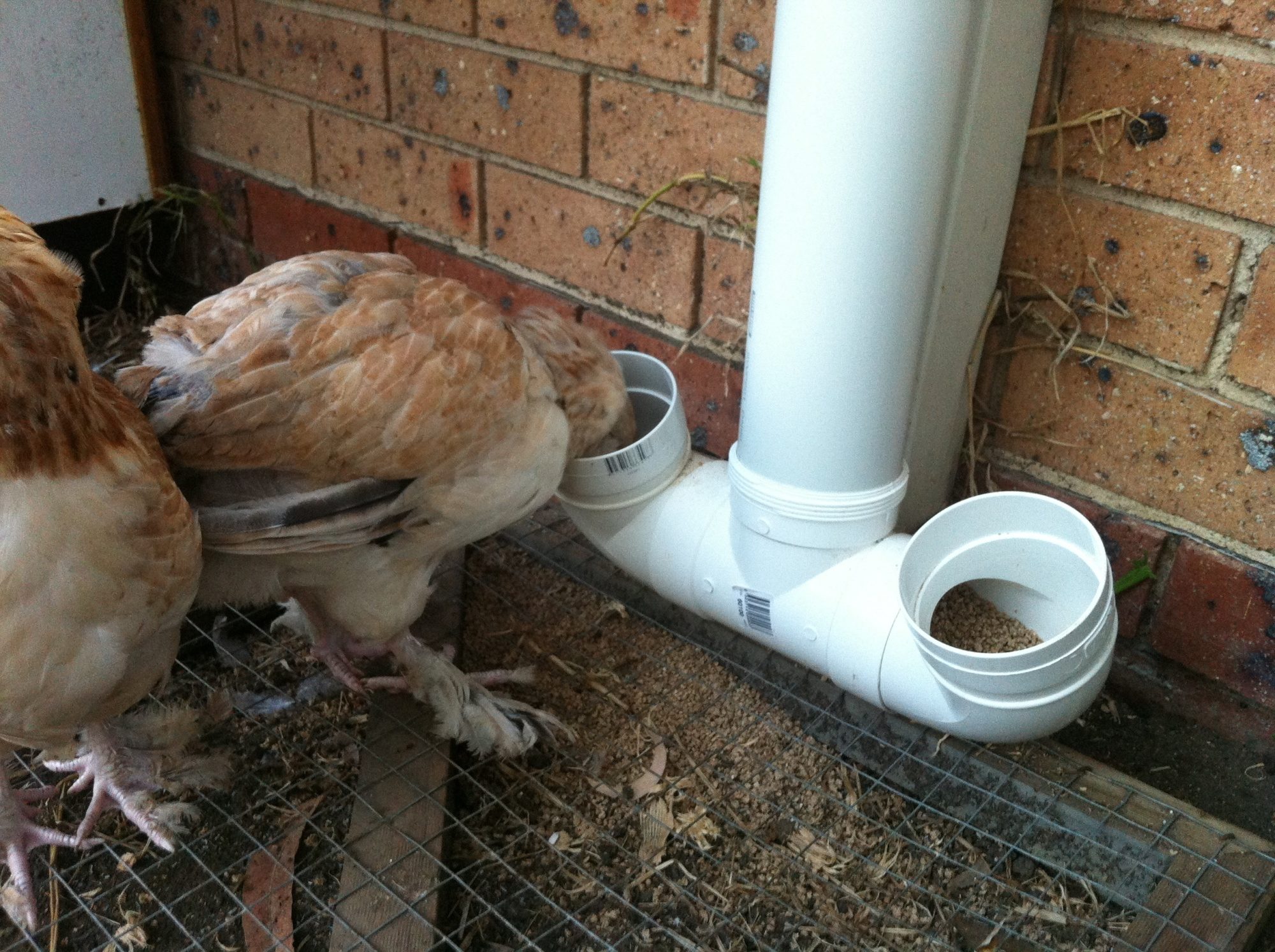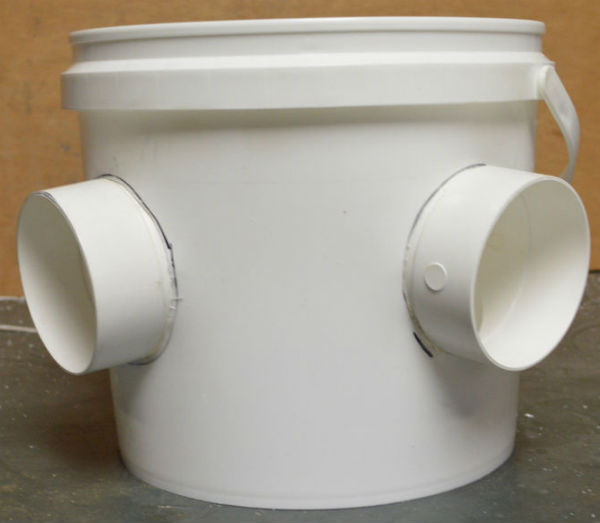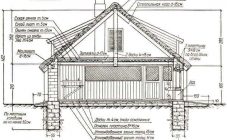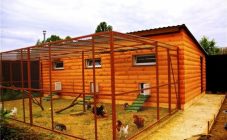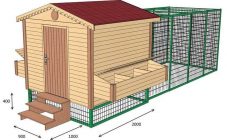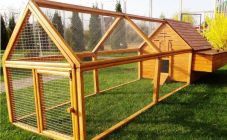Content:
When breeding poultry, you have to solve many issues related to the content. The quality indicators of poultry products, appearance and health of chickens largely depend on feeding. Feed is the most costly aspect of raising poultry, so it is important to minimize trampling losses and feed contamination.
Automatic feeders and drinkers for chickens
Feeding chickens by hand, especially with a large population, takes a lot of time and effort. An auto-feeder for chickens, equipped with a dispenser and a timer, will help the owner save time and money, and the birds will receive feed on schedule and in the required amount. Water containers (bowls, troughs) quickly become dirty as chickens step on them. For many years in the household, automatic drinkers of various types have been used: from inverted cans to nipple devices.
What kind of "furniture" for the poultry house to choose - everyone decides based on the possibilities and convenience. There is a large selection of factory-made feeding devices on the market. It is quite simple to make feeders and drinkers for chickens from scrap materials with your own hands, if you show a little imagination and skill.
Feeder classification
All types of bird feeders can be divided into three groups:
- flute - they are installed on the floor;
- trough type - attached to a wall or partition;
- bunker - for free-flowing feed, filled up for several days in advance.
Material for the manufacture and requirements for chicken feeders
For manufacturing, everything that is at hand on the farm is used: wood materials, plastic food containers, buckets, PVC pipes, bottles and bottles of various capacities, cans, metal parts and much more.
When making homemade feeders, they adhere to the following standards:
- the feeder should give the birds a free access to food and provide feeding standards - a layer of 5 cm for a chicken, 10 cm for a chicken;
- chickens should not be able to rake feed with their paws;
- the structure must be well strengthened so as not to fall if the bird jumps from above;
- the material should be easy to clean and disinfect.
Cutting board feeder
The simplest version of the feeder, which can be installed both indoors and outdoors, is done as follows. For manufacturing, you will need a cutting board, a plastic funnel, a hose (plastic tube), a plastic container (a bath, a small container), a drill and screws:
- a funnel is applied to the board and traced around the contour of the bell;
- several holes are drilled within the boundaries of the outlined contour;
- a hose is put on the spout of the funnel;
- the board is fixed with screws at a height equal to the length of the hose;
- the funnel is glued to the board along the contour so that its spout with the attached hose looks into the ground;
- the lower end of the hose is inserted into a hole drilled from the side in a plastic container.
The feed, poured onto the board, is poured through the holes through the hose into the feeding container.
Canister feeder
Such a device can be used on a large number of chickens. It is installed on the floor. For manufacturing, you can take a plastic canister of the required volume, following these tips:
- the canister is thoroughly washed (if it has been used previously);
- tighten the lid tightly;
- the canister should lie on the floor with its wide side;
- holes are made in the side faces of such a size that the head of the chicken (rooster) freely passes inward;
- on a flat wide face, a circle of the required diameter for a PVC pipe is cut out - feed is poured through it.
Plastic pipe feeder
Polypropylene and PVC pipes are convenient to work with due to their low cost, ease of processing and ease of cleaning. There are a lot of design options for feeders made of this material. The most popular and simple ones are described below.
One vertical pipe
- A commercially available wide diameter pipe (100-150 mm) with a length of 3 m is cut in two.
- Two taps are attached to the bottom: the first under 45, the second under 90 to the first.
- The pipe is attached to the wall (it is convenient to do this in the corner), feed is poured into it from above, which the chickens peck from below.
Several vertical pipes
The construction principle is similar to the previous feeder, but the number of pipes is larger and depends on the livestock. The plastic pipe can be cut in half and placed horizontally one part, cutting holes in it for the head of the chickens, and the other half of the pipe can be connected with an elbow to the first, giving a vertical position and used to load feed. It is possible to equip the pipe with two bends, making a double feeder with one hopper.
Plastic bottle feeder
Plastic bottles are affordable and easy to handle. Convenience lies in the fact that the bottles have different volumes, and this allows you to make a bunker feeder for babies (from a liter bottle) and for an adult bird (5-20 liters), using one principle:
- take one bottle and cut it in half;
- in the lower part from the side with a knife or scissors cut out several holes for the head of the birds;
- the upper part is turned upside down and inserted into the lower one so that it does not slightly reach the bottom of the lower part;
- food is poured on top, which the birds get through the holes.
Bunker feeders
A hopper feeder of any type provides for filling it with feed for a certain period of time, which significantly saves time. The amount of feed also determines the size of the hopper. You can make a similar structure from wooden parts and plastic. Hopper devices are used only for bulk feed. Wet mash will stick to the walls, the food will start to rot, which can lead to disease.
Wood hopper feeder
For work, you will need plywood or chipboard, a saw (it is better to use a jigsaw), slats, hinges and bolts. The algorithm of actions is as follows:
- Structural parts are cut out of plywood according to the size of the drawing: side walls, bottom, front and back surfaces, sides.
- Emery paper is used for grinding edges and roughness.
- Holes are drilled in the attachment points of the parts of the feeder.
- At the joints of the parts, the structure is reinforced with slats.
- Using bolts and screws, twist the hopper.
- The cover is attached with hinges (it should open freely).
- It is recommended to immediately treat wooden products for poultry with antiseptic agents.
The hopper feeder can be equipped with a foot pedal from below: the chicken steps on the foot pedal and the lid of the feeding table rises. Such a simple automation system will allow the feed to be kept closed, there will be no contamination and unnecessary consumption.When making the pedal, remember that it should easily sink under the weight of the chicken.
Bucket feeder bunker
For manufacturing, you will need a plastic bucket (of a suitable size), a metered tray for feeding animals with a larger diameter than the bottom of the bucket, a sharp knife, bolts and a screwdriver. Making a feeder does not take much time:
- cut several holes in a circle near the bottom of the bucket (diameter 3-4 cm);
- place the bucket in the middle in the feeding tray and fasten both parts with bolts;
- pour food into a bucket and close it with a lid.
A DIY chick bunker feeder can be made from a small CD container or a small plastic bucket. The bucket feeder is placed on the floor or hung at a short distance from it so that the chickens have the opportunity to get food.
Any model of automatic feeder-hopper can be equipped with a dispenser and a timer. This will allow you not to enter the house without the need for several days. The equipment required for setting the timer is commercially available.
Tray feeder
Tray feeders are installed on the floor in the poultry house (aviary) or suspended at a low height. This type of feeder can be taken outside the enclosure by placing the feeder along the wall and making holes in the grid (grate) for the head so that the bird can get food. In this case, there is no need to enter the aviary to fill up the food. When kept in a cage, this is the most convenient form of feeding. Most often, such devices are made of wood, but there are also metal and plastic ones. When installing the tray feeder, it is important to take into account that the chickens do not have the opportunity to climb inside, scatter and stain the feed. For this, the limiting parts are installed on top: mesh, wire, slats, dividing bars.
Proper feeding and costs
Proper bird feeding is a complex process. You can not overfeed the bird, with the exception of fattening categories, as egg breeds begin to get fat from overfeeding and reduce egg productivity. Some diseases in poultry are directly related to inappropriate feeding. Lack of feed and individual elements leads to delays in the development of young animals, improper formation of the musculoskeletal system, a decrease in the reproductive qualities of breeding birds: low fertilization of eggs, poor quality of the shell, low rates of hatchability of chickens.
Today, there is a large selection of feeds on sale that are intended for groups of birds that differ in:
- floor;
- age;
- physiological state;
- breed;
- direction of productivity.
| Feeder name (store) | Cost, rub. | Feeder name (homemade) | Costs, rub. |
|---|---|---|---|
| Bunker, plastic 28 kg on legs | 5250 | Bunker from a bottle, plastic | 0-500 |
| Bunker, plastic 21 kg on legs | 4710 | Plywood bunker | 700-1500 |
| Bunker, plastic for chickens | 1189 | Tray, wooden | 80-250 |
| Bunker, plastic for chickens | 504 | Bunker, tray made of PVC pipe | 40-100 |
| Hopper, galvanized steel | 3850 | ||
| Tray, 100 cm plastic | 700 | ||
| Tray, steel 100 cm | 1020 |
The table shows the approximate costs based on the cost of building materials.
The quality of eggs and meat of productive poultry depends on a properly composed diet. In the realization of the formation of good health and high productivity in chickens, providing them with convenient feeders plays an important role. A do-it-yourself chicken feeder saves significant money, since factory products cost a lot. Therefore, having familiarized themselves with simple design options, everyone can now easily equip their poultry farm with effective feeders.
